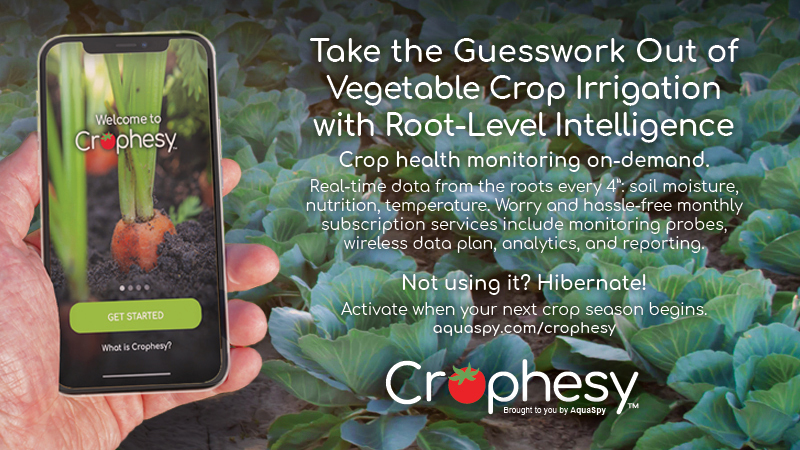Citrus Rootstock Selection On The Grow

This month’s “Citrus Nursery Source” topic is actually grower driven rather than nursery driven. However, as grower curiosities directly impact nursery orders and sometimes nursery selection, this is an ideal forum to address the issue of citrus rootstock selection. Two questions frequently asked are: (1) What rootstocks are growers selecting?; and (2) What are breeders working on with respect to rootstock development?
The top three rootstocks (Swingle, Kuharski, and Carrizo) comprise 72.12% of Florida rootstock volume, according to DPI’s Bureau of Citrus Budwood Registration. The top five (adding Sour Orange and X-639 to the previous list) account for roughly 80% of produced liners. Dr. Bill Castle, UF/IFAS, reminds us that Swingle and Carrizo displaced Sour Orange and Rough Lemon some years back as growers sought solutions to citrus tristeza virus (CTV) and blight. Growers and nurseries are maintaining their commitment to Swingle, despite some recently expressed concerns about HLB susceptibility. Perhaps equally as interesting is the resurgence of Sour Orange as a rootstock of choice. Sour Orange has long exhibited an impressive list of strengths, with only one significant weakness: CTV. However, as psyllid control measures have minimized concern about CTV, Sour Orange is making a comeback, particularly in the Indian River region.
Top Rootstocks In Florida*
| Rootstock | % Of Total | Cumulative % | |
| 1 | Swingle | 38.61 | 38.61 |
| 2 | Kuharski Carrizo | 16.84 | 55.45 |
| 3 | Carrizo | 9.13 | 64.58 |
| 4 | Sour Orange | 7.54 | 72.12 |
| 5 | X-639 (Cleopatra x Trifoliate) | 7.18 | 79.3 |
| 6 | Volkameriana Lemon | 4.28 | 83.59 |
| 7 | Cleopatra | 3.07 | 86.65 |
| 8 | Kinkoji | 2.85 | 89.50 |
| 9 | US 802 | 2.72 | 92.22 |
| 10 | US 812 | 2.69 | 94.91 |
*Propagations in the past year.
Source: DPI Bureau of Citrus Budwood Registration
Something To Build On
Growers are looking to nurseries for guidance in rootstock selection. Though more growers are considering replanting than a year ago, they are painstakingly evaluating all factors related to productivity, fruit quality, susceptibility to pest and disease, and adaptability to local conditions. Though Florida-based breeding programs are making strides in the development of new and exciting rootstock options, additional time is needed for evaluation and commercialization. Nurseries would be well served to provide the latest and best information on rootstock selection as a means of assisting growers with these important decisions. Any uncertainty that can be minimized will bolster grower confidence and support replanting decisions. Take advantage of the information available.
Dr. Castle provides an excellent assessment of the Sunshine State’s current citrus rootstock situation and the need for a continued commitment to rootstock research:
“The conventional grove (ca. 145 trees per acre) remains dominant, but some shift to the modern grove (ca. 218 trees per acre) has occurred. For example, a Valencia grove in Sebring on Swingle citrumelo was planted in 1992 at 247 trees per acre. It is managed conventionally with microsprinkler irrigation and twice-annual hedging. In the past 10 years, it has averaged 615 boxes per acre, and in its best years so far has produced 800 to 900 boxes per acre. That grove shows what is happening in the industry today and portends the future with advanced citrus production systems (ACPS) and superior plant materials.”
Research Roundup
I recently reached out to citrus breeding research teams and requested an update of their current work on rootstock development. Below is a very brief summary on rootstock research from several scientists.
Dr. Kim Bowman, USDA-ARS, Ft. Pierce
Dr. Bowman is strongly focused on his recently released rootstocks (US 802, US 812, US 897, US 942) due to their high productivity and range of tree size control. These rootstocks are increasing in popularity among growers. The 897 has proven to be particularly popular for high-density orange and tangerine plantings. Dr. Bowman also is continuing his work to develop a rootstock with all of the characteristics of Sour Orange, but with CTV tolerance. Finally, he is researching rootstocks that will help the tree with tolerance/resistance to HLB (including, but not limited to improved versions of US 802, US 812, US 897, and US 942.
Dr. Fred Gmitter, UF/IFAS CREC, Lake Alfred
Dr. Gmitter’s focus has been on tree size control by taking advantage of the genetics from Flying Dragon (FD) for higher density groves for the future. Making crosses with FD as seed parent segregates 50:50 for the curved stem and thorn trait, and that trait has been linked with reduced tree size. He wants something that is more nursery friendly than FD, easier to bud onto and grows up quicker in the nursery, yet still has the size control capacity in the end. He also wants the young trees to grow up quicker in the field, fill in the space (in more densely planted orchards), improve production efficiency, and produce better fruit size than FD trees typically give. He has crossed FD with other citrus types that might overcome some of FD’s downsides, like its intolerance of calcareous soils, high pH, salinity, etc.
Dr. Jude Grosser, UF/IFAS CREC, Lake Alfred
After collecting a few more years of yield and fruit quality data, Grosser expects to release new somatic hybrid (test tube babies produced by cell fusion) and tetrazyg rootstocks to the industry that should have improved disease resistance, better adaptation to poor soils, improved tree size control (which should facilitate mechanical harvesting and cold protection), improved nursery characteristics, and higher and more consistent productivity of quality fruit. One high performance tree-size controlling somatic hybrid rootstock (Changsha mandarin + 50-7 trifoliate orange) has been selected for release and is expected to facilitate the employment of new ACPS. Feedback from field trials is guiding current somatic hybridization research, and several mandarin + pummelo hybrids with potential to replace sour orange rootstock have been produced.
Their successes in somatic hybridization have allowed them to initiate rootstock breeding and selection at the tetraploid level, resulting in the selection of more than 150 superior tetrazygs to date.










